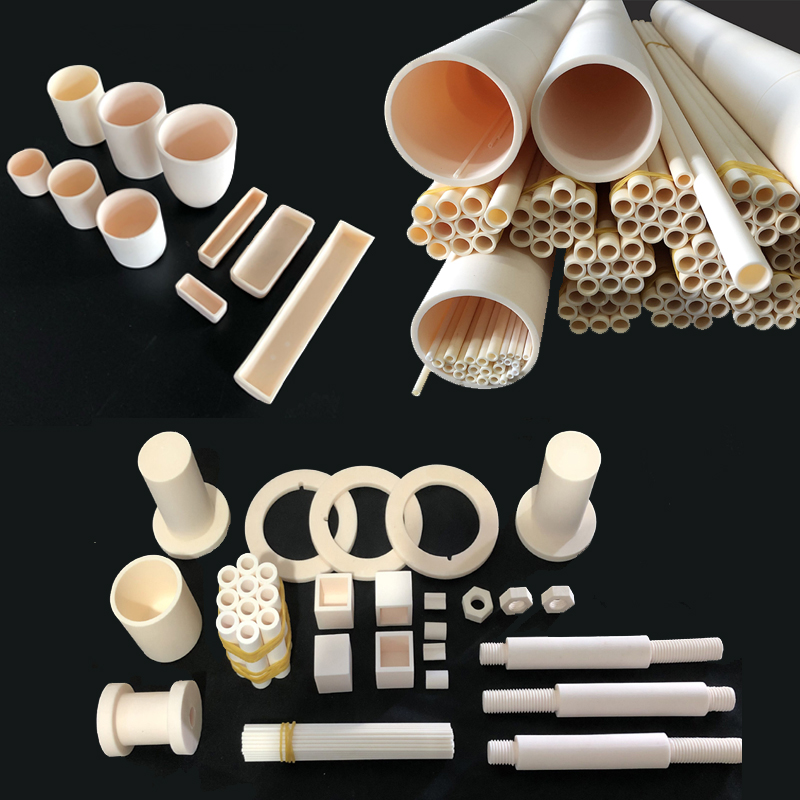Master these, and you can also sinter dense alumina ceramics!

Alumina ceramics have advantages such as high insulation, high thermal insulation, corrosion resistance, and high hardness. They can be widely used in manufacturing crucibles, engine spark plugs, high-temperature refractory materials, thermocouple casings, insulating substrates, sealing rings, tool molds, and so on.
Moreover, with the improvement of the manufacturing level, in recent years, alumina ceramics have also gained favor in the optical field. When alumina ceramics are fully densified, their light transmittance is significantly improved and they become translucent, which can be used to replace single-crystal sapphire for the production of devices such as arc tubes of high-pressure sodium lamps, infrared optical components, substrates for microwave integrated circuits, and so on. Not only that, the increase in density can also enhance the mechanical properties of alumina ceramics.
Densification is a process of exhausting gas.
Pores are common in ceramic materials, and the densification process of ceramics is actually a process in which the number of pores continuously decreases. According to different sintering processes, pores often remain inside the ceramic materials in two ways. One is that they exist inside the ceramic grains, and the other is that they are located at the grain boundaries of the grains.
Therefore, it is generally believed that there are mainly two approaches to improving the density of alumina ceramics. Firstly, by increasing the sintering temperature or providing a reducing atmosphere, atoms in the ceramics can diffuse more easily at high temperatures to achieve sintering. At the same time, the gaseous phase in the ceramics can easily diffuse out of the grains, leading to the formation of dense ceramics during the sintering process. Secondly, additives can be used to improve the densification of the ceramics.
In addition, in actual production, the selection of raw materials and the production process are also key points affecting the densification of alumina ceramics.
Raw materials: Select high-purity and ultra-fine alumina.
1. Select high-purity alumina powder.
It is inevitable to introduce impurities during the preparation process of ceramic powder. The organic impurities among them will be burned off during the sintering process, but irregular pores will be formed during the densification process. Inorganic impurities may react with the ceramic powder at the high-temperature stage or remain in the matrix to form micro-cracks. These microstructural defects caused by impurities will inevitably have a significant impact on the densification of alumina ceramics. Therefore, using high-purity Al₂O₃ powder is an important prerequisite for preparing alumina ceramics with excellent properties.
2. Reduce the particle size of the alumina powder.
The finer the particles, the shorter the sintering time. This is because the finer the particles, the closer their contact is. During sintering, the diffusion path is shorter, and at the same time, the sintering driving force - surface energy is also greater. The emergence of ultra-fine powder preparation technology has opened up a new way to reduce the sintering temperature of ceramic materials, improve the microstructure of products, and enhance the mechanical properties of materials (such as hardness, strength, toughness, and wear resistance, etc.).
However, due to the relatively large surface energy of extremely fine powder particles, the grains grow rapidly or abnormally during the high-temperature sintering process. At the same time, the surfaces of extremely fine particles have relatively high activity, which may adsorb impurities, resulting in impure powder and making the forming process more difficult. Therefore, the powder materials selected for the production of highly dense ceramics generally have a particle size range of 0.1μm to 1μm.
The uniformity of the mixed materials
In order to reduce the sintering temperature of alumina ceramics, appropriate additives need to be added to the powder materials before sintering. Therefore, the level of material mixing is also an important factor affecting the ceramic sintered body. The purpose of material mixing is to make the composition of the powder uniform. If the composition distribution is not uniform, the local composition will deviate from the overall ratio. There will be less additives in some local areas, and alumina is difficult to sinter at low temperatures. In areas with more additives, the melting point is lower, and a liquid phase is likely to appear, causing the grains to grow rapidly. Eventually, this will lead to an uneven microstructure of the product and a low density.
Reasonable molding method
Molding is one of the important processes that directly affect the sintering process and the performance of the sintered body. Relevant experiments have verified that, at the same sintering temperature, if the relative density of the green body is higher, the relative density of the corresponding sintered body is also higher. Therefore, in order to ensure a higher density, a relatively large molding pressure is generally applied. At present, the molding methods for high-performance alumina ceramics are divided into two types: the dry method and the wet method.

